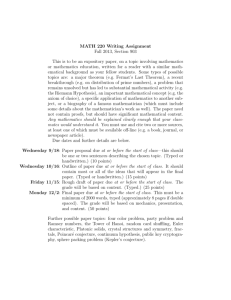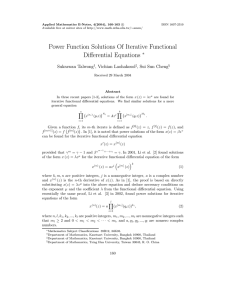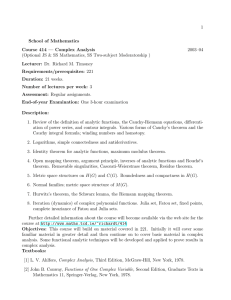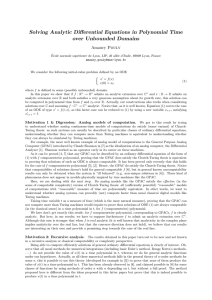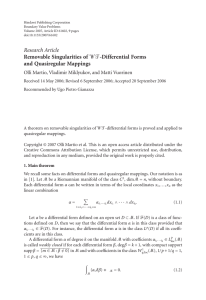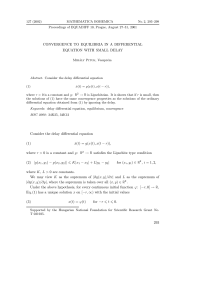Simple Article For AMEN ∗ First Second Family , Sui Sun Cheng
advertisement
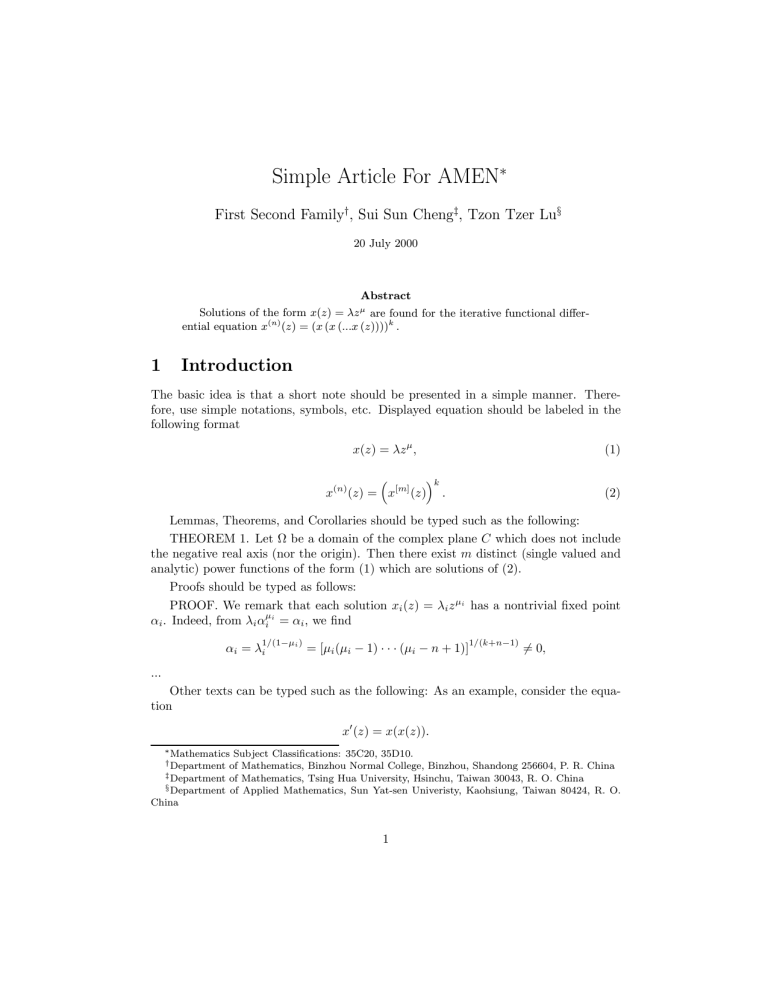
Simple Article For AMEN∗
First Second Family†, Sui Sun Cheng‡, Tzon Tzer Lu§
20 July 2000
Abstract
µ
Solutions of the form x(z) = λz are found for the iterative functional differential equation x(n) (z) = (x (x (...x (z))))k .
1
Introduction
The basic idea is that a short note should be presented in a simple manner. Therefore, use simple notations, symbols, etc. Displayed equation should be labeled in the
following format
x(z) = λz µ ,
(1)
k
x(n) (z) = x[m] (z) .
(2)
Lemmas, Theorems, and Corollaries should be typed such as the following:
THEOREM 1. Let Ω be a domain of the complex plane C which does not include
the negative real axis (nor the origin). Then there exist m distinct (single valued and
analytic) power functions of the form (1) which are solutions of (2).
Proofs should be typed as follows:
PROOF. We remark that each solution xi (z) = λi z µi has a nontrivial fixed point
αi . Indeed, from λi αiµi = αi , we find
1/(1−µi )
αi = λi
1/(k+n−1)
= [µi (µi − 1) · · · (µi − n + 1)]
= 0,
...
Other texts can be typed such as the following: As an example, consider the equation
x (z) = x(x(z)).
∗ Mathematics
Subject Classifications: 35C20, 35D10.
of Mathematics, Binzhou Normal College, Binzhou, Shandong 256604, P. R. China
‡ Department of Mathematics, Tsing Hua University, Hsinchu, Taiwan 30043, R. O. China
§ Department of Applied Mathematics, Sun Yat-sen Univeristy, Kaohsiung, Taiwan 80424, R. O.
China
† Department
1
From
µ2 − µ + 1 = 0,
√
1/µ
1/µ
we find roots µ± = (1 − 3i)/2. We find λ− = µ− − ≈ 2.145 − 1.238i, λ+ = µ+ + ≈
6
2.145 + 1.238i. Since |µ± | = 1 and µ± = 1, they are roots of unity. This shows that
the requirements in the main Theorem in [1] does not hold. Therefore, we have found
analytic solutions which cannot be guaranteed by the main Theorem in [1].
Figures should be prepared in the EPS format and placed at the center by commands
such as: centereps{width}{height}{file}.
References should be typed as follows:
References
[1] J. G. Si, W. R. Li and S. S. Cheng, Analytic solutions of an iterative functional
differential equation, Computers Math. Applic., 33(6)(1997), 47—51.
[2] E. Eder, The functional differential equation x (t) = x(x(t)), J. Diff. Eq., 54(1984),
390—400.
[3] L. W. Griffiths, Introduction to the Theory of Equations, 2nd ed., Wiley, New York,
1947.
2
